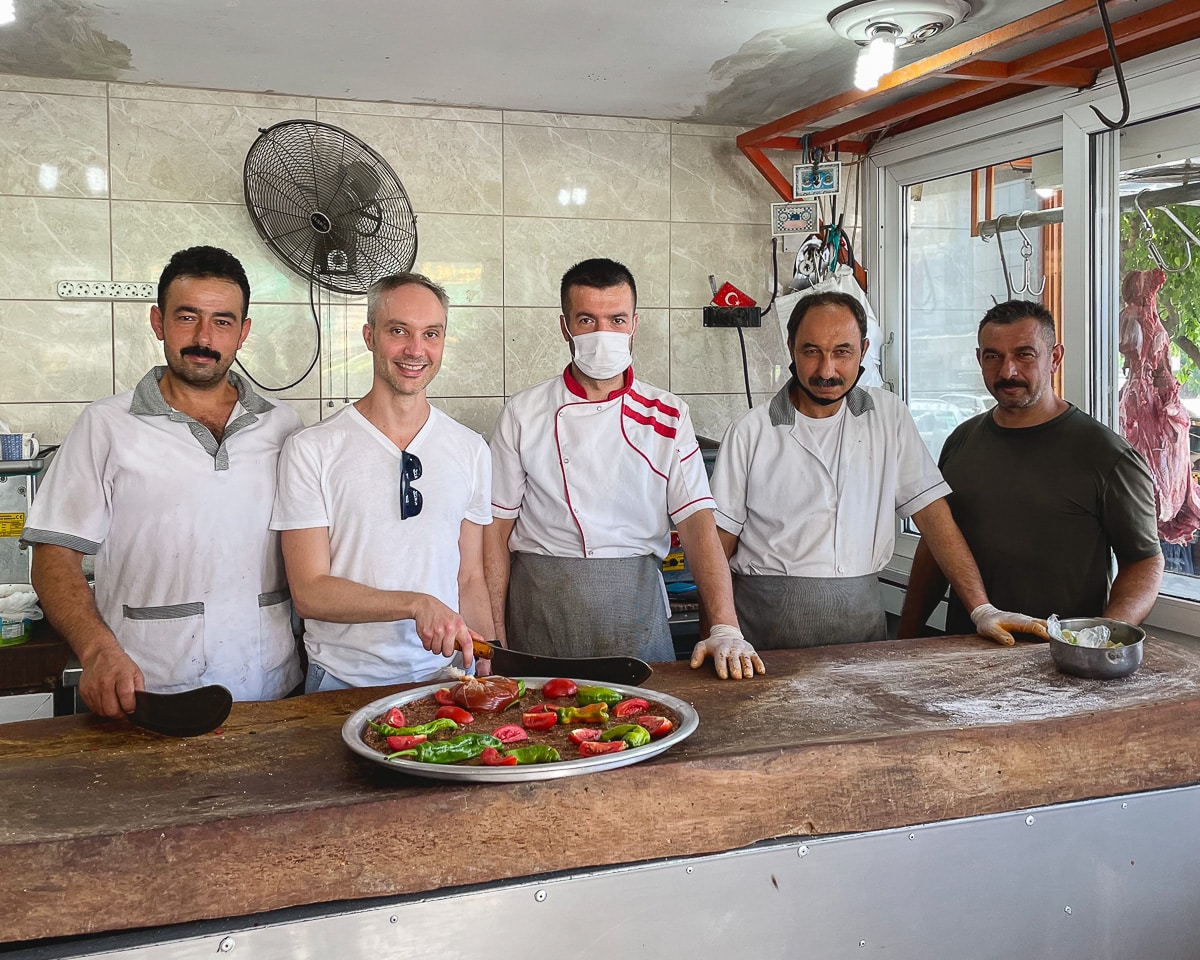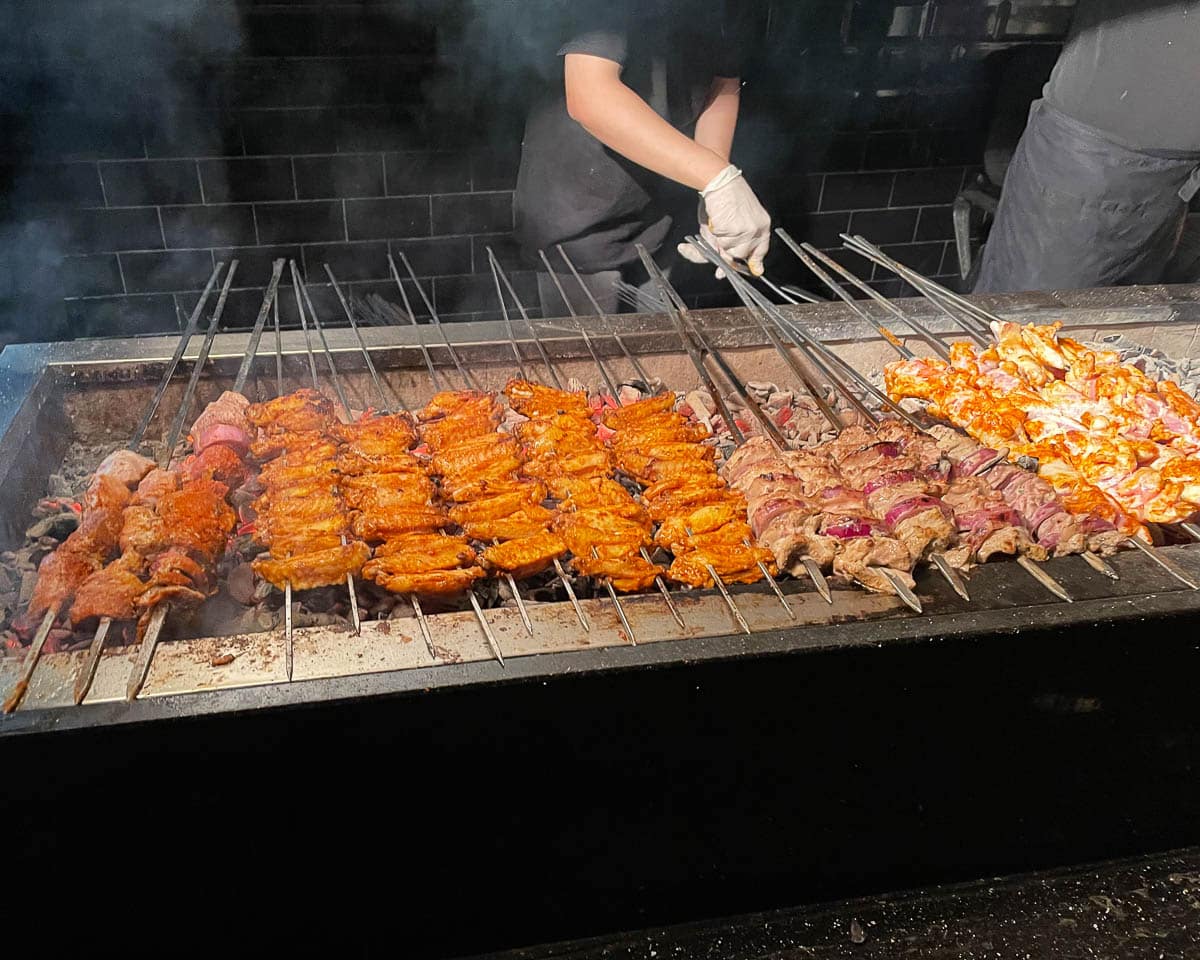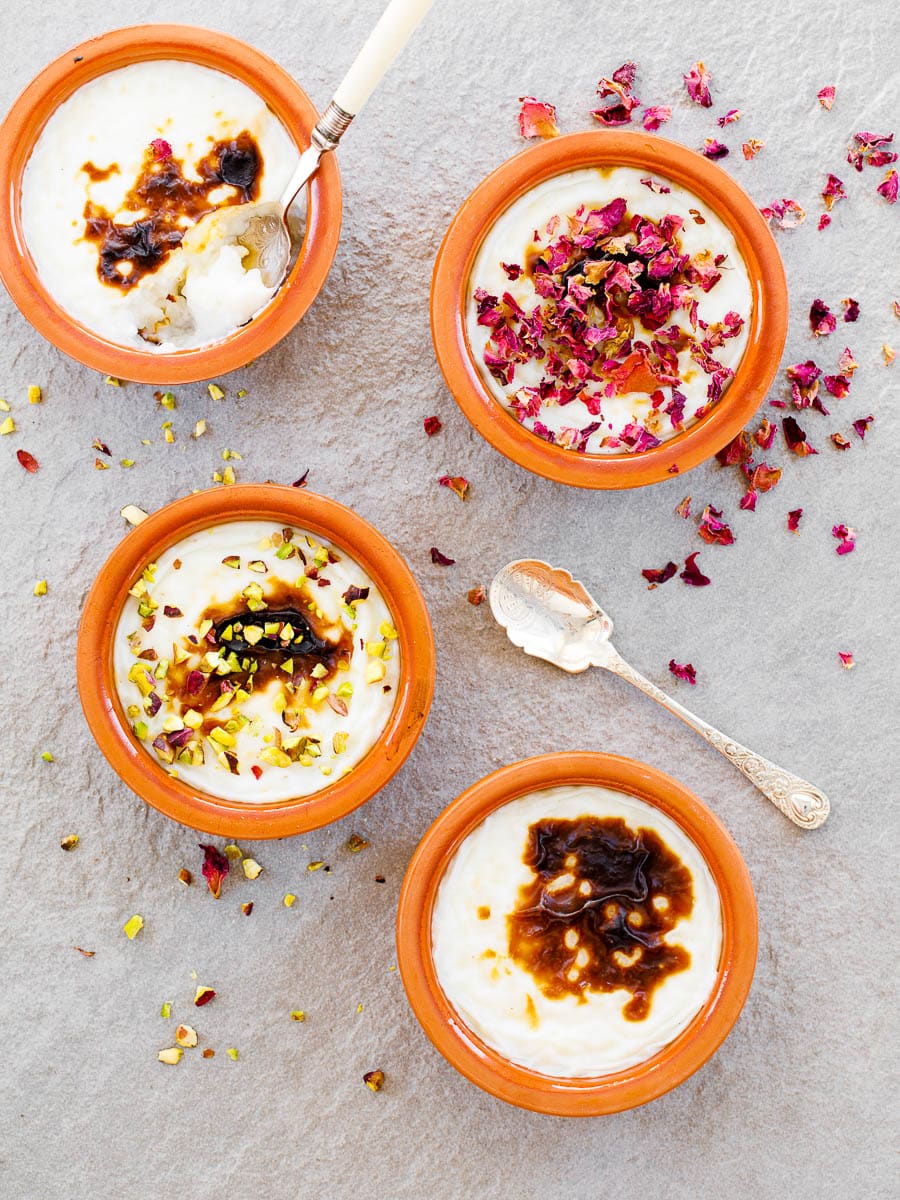If you’ve ever visited Turkey, chances are you ate an Adana kebab, maybe even a few. It’s a true classic of Turkish cuisine. I’ve spent some considerable time trying to recreate the Adana kebab at home, with ingredients and techniques more readily available around the world.
What is Adana kebab?
Named after the city of Adana in the south-east of Turkey, the Adana kebab is the gold standard for minced meat kebabs in Turkey.
Though I say minced meat kebab, real Adana kebab is never made with meat that’s been through a grinder.
Instead, it’s hand chopped from chunks of meat and tail fat from fat-tailed sheep. Turkish grillmasters chop the mixture until it’s just fine enough to cling to a skewer, but coarse enough to retain texture.
The knife used for the purpose is called zırh. Watching the usta (“master”) at work with the knife and meat is a joy to behold.

The ingredients
You only add a small number of other ingredients to the meat. All serve to highlight the flavour of the meat, not themselves.
Some chili flakes, for an aromatic (but not burning) heat, flat-leaf parsley and salt. Perhaps onion and black pepper, though opinions seem to diverge on their inclusion. Many claim even parsley should be excluded, and that a true Adana kebab should consist of only meat, fat, chili flakes and salt.
If you ask the connoisseurs, only lamb meat will do. Often, it’ll be a mixture of beef and lamb (though the added fat is always lamb).
After being threaded onto wide grilled skewers with expert hands, the kebabs are grilled over a hot charcoal barbecue. The smoke from the fat drippings give the kebabs their signature smokey flavour.

The traditional sides are:
- grilled vegetables (tomatoes and long, green peppers, sometimes an onion)
- an onion salad
- an ezme salad (spicy, finely chopped salad akin to salsa)
- bread, usually a thin lavash
- perhaps some herbs or another salad, like shepherd’s salad or tomato walnut salad
A few adaptations for the home cook
While most home cooks (myself included) will have to make some adaptations to make something similar at home, there’s really no secret as to what makes a good kebab of any sort. You may not want to hear it, though:
Good meat. Lots of salt. Lots of fat. It really is that simple.
If you want to get anywhere near the flavour of an authentic Turkish kebab, you’ll probably need to use significantly more salt than you do when making meatballs. And almost certainly more fat. Regular minced (ground) meat is unlikely to be fatty enough.
In other words: Adana kebab isn’t the dish you make when you want to eat something healthy. Adapting it to a healthier version is pointless, akin to making boeuf bourguignon without wine, or phở without stock.
The ingredients
The first obvious adaptation I make, is to use ready made minced meat in place of the hand chopped meat of Turkish kebap joints. I’ll leave it to you whether you use lamb, beef or a mixture. I recommend lamb or a mixture.
While I can get hold of tail fat at my butcher’s, that’s not the case for most outside of Turkey. In his seminal book on Turkish cooking, Musa Dağdeviren suggests clarified butter as a substitute. It’s a surprisingly good one. In my testing I found that even regular butter (not clarified) works really well, too.
I also include onion and black pepper in my recipe. Very finely minced, for extra depth of flavour. This compensates somewhat for the lack of hand chopping and tail fat.
The technique

The only tricky part of making Adana kebab is skewering the meat. You’ll probably have a few skewers where the meat starts falling off on your first attempts, but practice makes perfect. Remember, the best Turkish grillmasters have decades of experience!
The key, I find, is to work fast, but not rushed. Not so fast that the meat starts falling apart before you’ve even managed to shape your kebab. But also not so slow that the meat becomes too warm (a cold meat mixture is easier to work with).
Place the chunk of meat in the middle of the skewer and, using one hand, work your way up and down. You should only have a fairly thin layer around your skewer. The skewer needs to be flat and wide like in the picture. Thin skewers won’t be able to hold the meat.
If you’re worried the meat might fall off, place them on a rack rather than letting the skewers rest on the edges directly over the heat when cooking.
The cooking

If you can, I highly recommend cooking over a coal barbecue. I’ve never seen anyone get anywhere near the same flavour with gas flame “barbecues”. But, as ever, make do with whatever options you have. You’ll still get a very nice kebab from a gas flame barbecue, just not as smokey and tasty as it could have been.
If barbecuing isn’t a possibility where you live, you’ll need an alternative.
I’m pleased to say that grilling the kebab over a very hot grill pan worked quite well in my testing. Of course, it won’t be as smokey as the real thing, but it’s no worse than a gas fired barbecue.
Just be aware that the drippings (of which there’ll be a lot) will cause a lot of smoke. You’ll want to make sure you air really well or take the whole thing outside with a portable hob.
Happy barbecuing!

Adana kebab
Ingredients
- ½ medium onion, approx. 50g/1¾ oz net weight
- 15 g leaves of flat-leaf parsley
- 400 g minced lamb, beef or a mix (min 15% fat)
- 50–75 g butter, melted (clarified butter is best), or finely chopped lamb fat
- 1 Tbsp pul biber (Aleppo pepper), or to taste
- 1 tsp salt
- ½ tsp pepper
Garnish & sides
- 1 medium tomato, halved or quartered
- 4 Turkish long green peppers (sivri biber), or any other mild long green peppers
- Turkish sumac onions
- lavash, or another type of flatbread
- ezme salad
- chopped salad
How I make it
- Add the onion and parsley to a food processor and finely chop. Transfer to a sieve and press out some of the juice (I use the back of a spoon for this).
- Transfer to a bowl and combine with the minced meat, melted butter, chili flakes, salt and pepper. I recommend the full amount of butter for meat with c. 15% fat, the lower amount for meat with 20% fat (you’ll want close to 30% total fat). Knead until the mixture is completely homogeneous, 2–3 minutes.
- Heat up a barbecue (preferably charcoal). Alternatively, heat a large cast iron grill pan to high.
- Thread the tomatoes and peppers onto thin grill skewers.
- Divide the meat mixture into four equal parts. Place a ball of meat on the center of a wide grill skewer, then – using your hands – shape into a long kebab. The meat should form a relatively thin layer around the skewer with no air in the middle. Wet your hands periodically to prevent sticking.
- Grill the kebabs and vegetables, turning regularly, until they are browned at the edges and cooked through, 5-15 minutes. Be mindful of the smoke from dripping fat, especially if cooking on a grill pan indoors (in which case make sure to ventilate properly.
- Serve the kebabs immediately with lavash or other bread, grilled vegetables and other sides of your choice.















4 responses
These are legit, just came back from Adana. Actually, these are better.
Delicious recipe. The family adored this and the empty plates are a testament to how tasty it was. I made a double batch that took an hour from start to plate. Will need to be one of our regular favourites. Perfect with salad. Thank you very much for this tasty meal idea! X
This was much more successful for us than past recipes in recreating Adana kebabs. We don’t have the skewers so grilled them on a perforated basket. And we used poblano peppers which are what we can get here in the US. The ghee was key!
How wonderful to hear, so glad you enjoyed it!